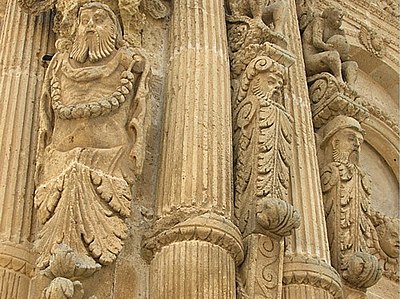NARDO
Between Galatina and the Jonic
Sea, in the province of Lecce, is where one can visit Nardò,
a centre with very old origins and city of art able to intrigue
the more demanding visitor interested in art.
There are testimonies of human settlements dating back to
the Paleolithic age which have been found in the Bay of Uluzzu
in diverse grottoes and where finds of remarkable artistic
interest for the period have been uncovered.
There are many hypotheses instead regarding the origins of
the City which name Cretan navigators arriving on the Jonic
Coast during the II millennium BC as founding Neriton. Another
hypothesis names the Eyptians, but Nardò was definitely
an already existing Messapian centre beginning from the X
century BC.
Like all other Messapian centres, it enjoyed its maximum splendour
during the VII and VI centuries and then entered into the
commercial orbit of the powerful Greek colony of Taranto,
with whom moreover, the Messapian cavaliers entered into war
many times and were almost always victorious.
The old enemies then became allies against Rome at the command
of Pirro, who defeated the Romans numerous times, but with
heavy losses. During 269 BC, Pirro was called back to Epiro
due to internal affairs and the whole of Puglia passed under
Rome.
During the Second Punic War, Hannibal located to Puglia and
conquered numerous inhabited centres, among which, Nardò.
During the Civil War which lasted between 90 and 88 BC, Nardò
lined up against Rome, paying for this choice by being isolated
and abandoned.
The Imperial era saw its rebirth thanks to the peace politics
introduced by Augusto which allowed commercial trade to prosper
with the East, giving the region an enormous advantage. New
roads were built which were connected to the Appian Way. Neretum
was therefore accessible through the Traiana Salentina which
connected to the powerful Taranto.
It passed under the Byzantines after the Greek-Gothic War
(535-553) and under Longobard domination only for a few years
(662-690). It saw the arrival of Basilian Monks in escape
from iconoclastic persecution (VIII century) who gave the
origins of the Rupestrian religious culture still visible
in the Le Tagliate district. They also founded the Santa Maria
of Nerito Abbey.
Nardò was attacked by the Saracens at the beginning
of the X century and passed hands to the Normans in 1058 BC
under Goffredo, Robert Guiscard's nephew who was Count of
Conversano. The Castle was built and the village fortified
under the new noble.
With the advent of the Swabians (1194), the City was administered
by Simone Gentile and Nardò took sides with Emperor
Frederick II and his son, Manfred, during clashes with the
Pope. It was for this reason that it was attacked and damaged
by the Guelph cities loyal to the Pope, among which Taranto
and Brindisi (1255).
It returned under Swabian domination and had to succumb to
the Angioinians (1269) who executed Simone Gentile, the last
Vassalli descendant.
Under the Angioinians it was governed by numerous nobles,
among which Filippo of Toucziaco, Guidone of Alemagna, Mobilia
of Cotigny, Del Balzo and the Sanseverino family.
Under Aragonese domination, it was sold by Frederick I to
the Del Balzo Orsini family for 11.000 ducats and on 19th
May 1484, it was attacked by the Venetians who, after having
conquered Gallipoli, entered the City.
In 1497, Nardò was made a fief of Count Belisario Acquaviva
who made important architectonic changes in the City. During
the Franco-Spanish clash, it was occupied for a few months
by troops commanded by Lautrec (1528).
Shortly afterwards it returned to the Acquaviva family and
remained under their governing until 1806, the year of abolition
of feudalism under the wishes of Giuseppe Bonaparte.
During the '600s, Nardò also exploded in popular revolt
against the feudatory Acquaviva, who was guilty of bad government
of the City (1647). The repression was so strong that it folded
the City's economy for many years.
Nardò actively participated in the Renaissance motions.
It firstly became seat of a Rivendita Carbonara (Smaller city
associations linked to the Carbonari movement which promoted
independent ideas) called Fenice Neretina and secondly participated
in clashes in the battle fields with loyal Bourbon troops.
In 1861, after a plebiscitary vote the previous year, Nardò
was unified into the Reign of Italy.
Piazza Salandra is the centre of the City where one will find
Baroque buildings, among which Palazzo della Pretura and the
San Domenico Church ('500s).
Not too far away one can also admire the beautiful Romanesque
Cathedral (1090) constructed on a previous religious building
and Palazzo Vescovile.
Among the other churches worth mentioning: Renaissance Carmine
Church (1529), Santa Chiara and Sant'Antonio of Padua.
In Piazza Diaz one will come across the majestic Acquaviva
Castle (XV century) which is the present day Town Hall seat.
|
